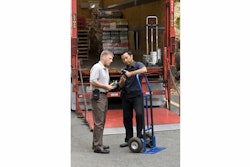The broadline distributors emerged in the early 1970s offering the ultimate concept of a “one-stop-shop” distributor, according to The Hale Group. By 2010, they accounted for nearly 60 percent of all distributor sales to operators. The system distributor services multi-unit operators with a streamlined and tailored set of services valued by these large operators.
As broadline distributors work to improve operating efficiencies, they will increase the minimum purchase size per delivery and that will cause smaller operators to be unable to meet this requirement. Also, operators will realize alterative distributors offer lower prices for products because the alternative distribution outlet have a different business model and part of this model is lower gross profit margins.
Alternative distributors are most often “cash and carry-like” distributors or wholesalers, according to The Hale Group. This includes club format outlets, classic cash and carries and a newer breed of restaurant depots and similar formats. This format is evolving to be more attractive and more popular with the small operator not purchasing through a centralized purchasing organization.
The growth achieved by this set of distributors is well above industry growth rates because operators are increasingly recognizing the value provided by these distributors, The Hale Group notes.
Specialty distributors provide value by offering a set of specific categories of products that they assemble or manufacturer and then distribute to the operator.


















